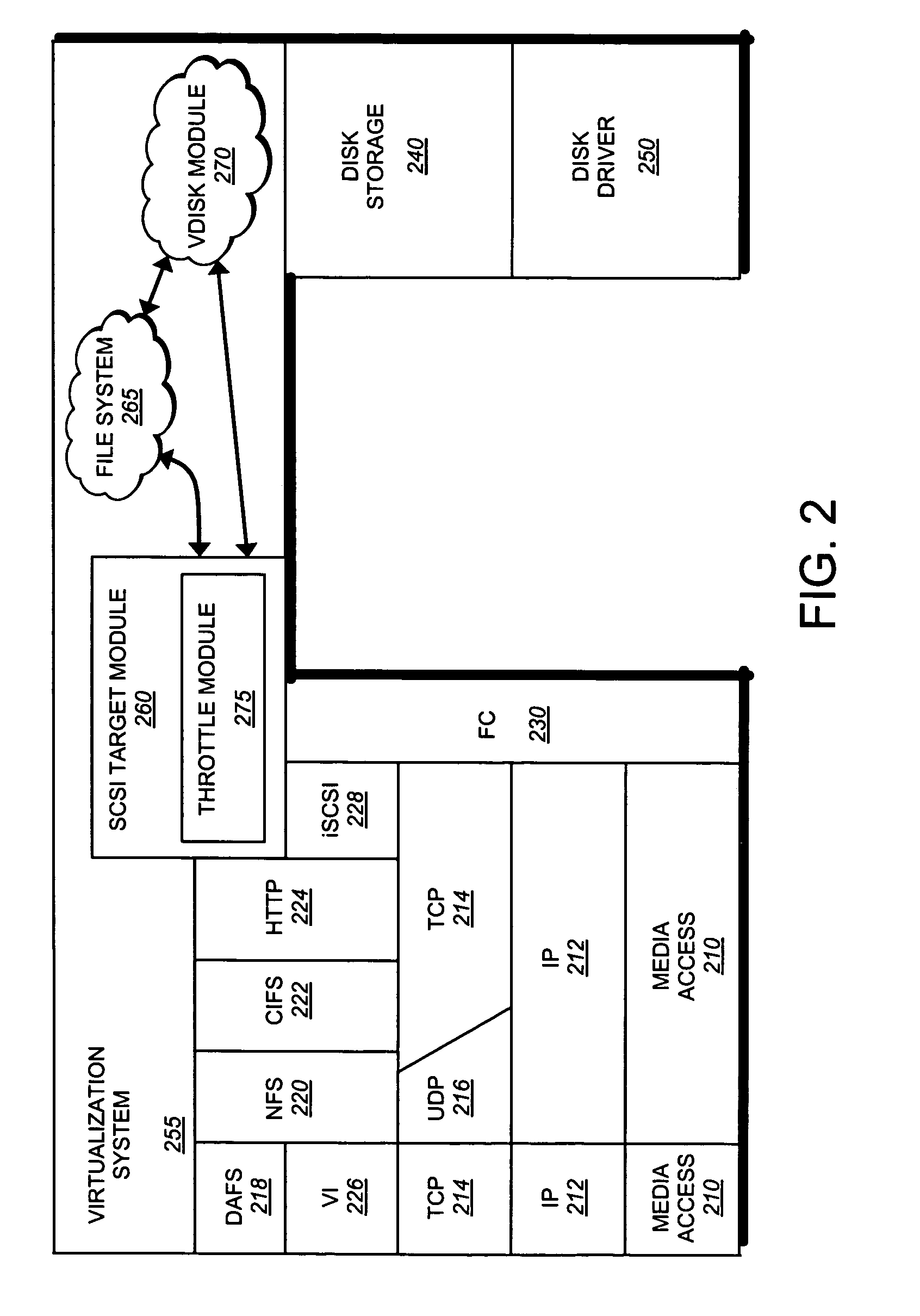Technique for throttling data access requests
a data access request and request technology, applied in the field of storage systems, can solve the problems of clients slowing down the i/o rate of the storage system, and achieve the effect of reducing the issuance rate and slowing down the rate of the data access ra
- Summary
- Abstract
- Description
- Claims
- Application Information
AI Technical Summary
Benefits of technology
Problems solved by technology
Method used
Image
Examples
Embodiment Construction
A. Multi-Protocol Storage Appliance Environment
[0017]FIG. 1 is a schematic block diagram of a storage system 100 configured to provide storage service relating to the organization of information on storage devices, such as disks 130. The storage system 100 is illustratively embodied as a storage appliance comprising a processor 122, a memory 124, a plurality of network adapters 125, 126 and a storage adapter 128 interconnected by a system bus 123. The storage appliance 100 also includes a storage operating system 200 that provides a virtualization system (and, in particular, a file system) to logically organize the information as a hierarchical structure of named directory, file and virtual disk (vdisk) storage objects on the disks 130.
[0018]Whereas clients of a NAS-based network environment have a storage viewpoint of files, the clients of a SAN-based network environment have a storage viewpoint of blocks or disks. To that end, the storage appliance 100 presents (exports) disks to ...
PUM
 Login to View More
Login to View More Abstract
Description
Claims
Application Information
 Login to View More
Login to View More - R&D
- Intellectual Property
- Life Sciences
- Materials
- Tech Scout
- Unparalleled Data Quality
- Higher Quality Content
- 60% Fewer Hallucinations
Browse by: Latest US Patents, China's latest patents, Technical Efficacy Thesaurus, Application Domain, Technology Topic, Popular Technical Reports.
© 2025 PatSnap. All rights reserved.Legal|Privacy policy|Modern Slavery Act Transparency Statement|Sitemap|About US| Contact US: help@patsnap.com



